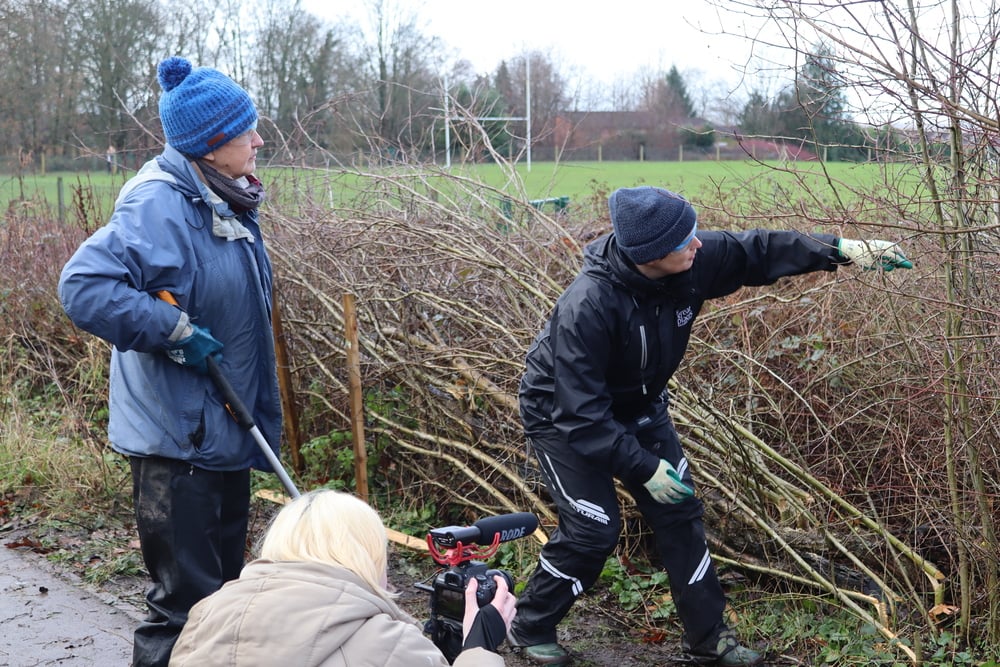By Diana Scotcher on behalf of SLH
This article was originally written for the February edition of Heatons Post
What’s the history of our hedge?
In 2016 SLH started working on a hedge established about 150 years ago. It had been neglected, and was a line of straggly trees with gaps. It wasn’t a hedge anymore!
A professional taught us the rudiments of the ancient art of laying a hedge to make it thicker and bushier. We were shown how to cut the stems over half-way through, to lay them until almost flat, to twine the stems around each other, and to use poles to support the structure. To fill the gaps, we planted tree seedlings, or whips. By the next summer, the base of the hedge had already begun to fill out with new growth.
Why did we do this?
Hedges are important for the environment and biodiversity, and sadly numbers have diminished by over 50% in the last 50 years. Healthy hedge habitats are crucial to the survival of local wildlife, such as hedgehogs, mice, frogs, bats and birds. Other plants are sheltered by hedges and in turn provide nectar for bees and butterflies. Hedges help the soil to keep stable and healthy, and healthy soils store carbon.
Can anyone help?
Regular maintenance is the third Sunday in the month, 10am to 12 noon. Check our Events page for alterations.
During the winter, while the hedge is dormant and we won’t be disturbing any nesting birds, we are re-laying the hedge and putting in new poles. At other times of year we keep the area clear of plants that take over, we pick up litter and tidy the path.
Everyone is welcome, whether a hedge expert or a novice! Wear warm clothes, sturdy shoes and gloves. We bring equipment, gloves and a hot drink for 11am. The hedge is between Priestnall allotments and the recreation field, on the lane that links Trentham Avenue (SK4 3QD).
Check out our great new 3-minute film from one of our recent task days:
Questions? Contact info@slheatons.org
You want to know more? You might like to check out Country File on BBC iPlayer for a fascinating episode about hedge laying. The Soil Association and RSPB also have information about why hedges are important.

